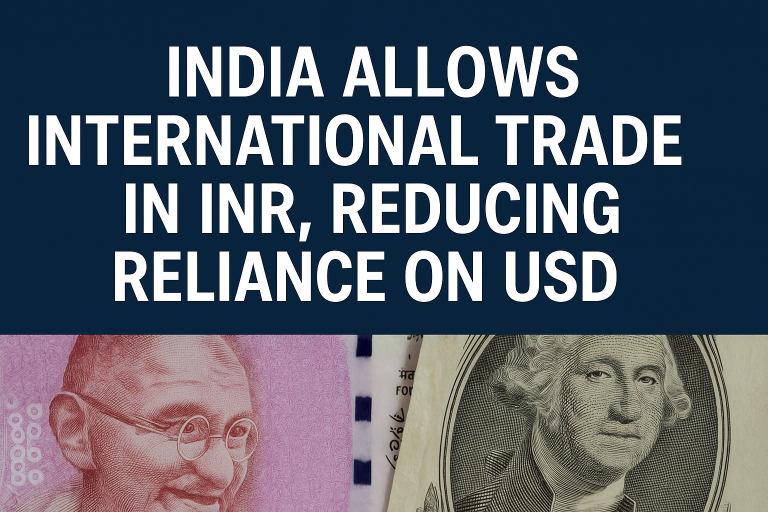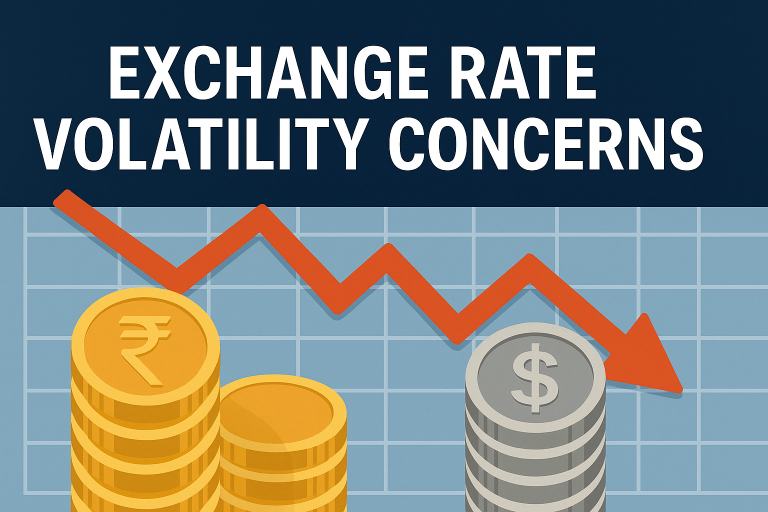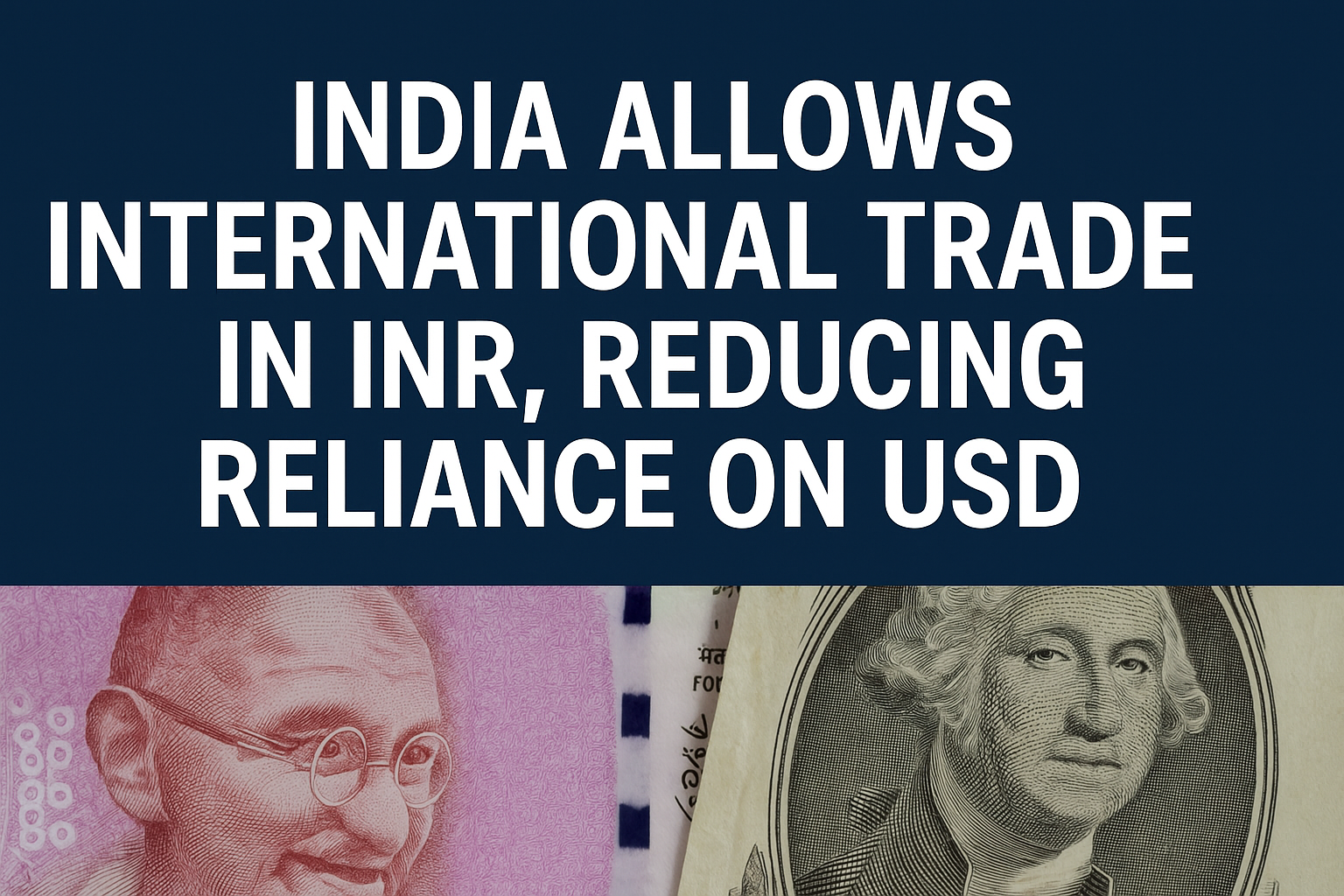India Allows the International Trade in INR, Reducing the Reliance on USD

Introduction to India’s INR Trade Initiative
In a move that could ripple through the corridors of Wall Street and beyond, India now allows international trade in INR, striking at the decades-long dominance of the U.S. dollar.
This isn’t just a currency tweak — it’s a strategic declaration: “We’re ready to write our own rules.”
For years, the world’s trade has been tethered to the USD, but cracks are showing. From U.S. sanctions squeezing economies to emerging powers demanding a seat at the table, global commerce is ready for a shake-up — and India’s Rupee might just be the disruptor-in-chief.
Why the Shift from USD to INR Matters
The Dominance of the USD in Global Trade
The U.S. dollar is the trade kingpin — involved in 80%+ of global transactions and 60% of foreign reserves. This dominance isn’t just about convenience; it gives Washington outsized influence over global economics. But with great power comes great dependency — and many nations are over it.
The Push for Currency Diversification
From Moscow to Brasília, countries are looking for ways to bypass the USD chokehold. India’s INR trade push isn’t happening in a vacuum — it’s part of a worldwide de-dollarization trend, driven by geopolitics, risk reduction, and the rise of regional powers.
India’s Strategic Move: INR in International Trade
Policy Announcements and Government Initiatives
The Reserve Bank of India didn’t just suggest INR trade — it built the framework. Special vostro accounts now allow foreign banks to hold INR, enabling direct Rupee settlements without a USD detour.
Bilateral Agreements Boosting INR Trade
India is quietly striking deals. From energy imports with Russia to tea exports to Sri Lanka, these agreements make INR settlements not just possible but practical.
Countries Already Using INR for Settlements
Russia? Onboard. Sri Lanka? Already buying essentials in INR. Some African nations? Testing the waters. This early adoption is key — credibility builds one deal at a time.
Economic Benefits for India and Partner Nations
Strengthening the Indian Rupee
As demand for INR in trade grows, so does its stability. A stronger Rupee means more bargaining power for India in everything from oil imports to technology licensing.
Lower Transaction Costs
Every USD conversion is a fee pitstop. INR-based trade cuts out those costs, making exports more competitive and imports easier on the wallet.
Increased Trade Opportunities for SMEs

Small and medium businesses often avoid global markets due to high forex costs. With INR trade, the entry barrier drops — potentially creating a wave of new exporters.
Challenges in Shifting from USD to INR

Exchange Rate Volatility Concerns
The Rupee is more volatile than the USD. Without strong hedging tools, businesses may hesitate to fully commit.
Limited Global Acceptance of INR
Right now, INR is a niche currency. Scaling adoption requires building trust in liquidity and stability.
Regulatory and Banking Infrastructure
Banks and payment systems worldwide must adapt to process INR smoothly — a logistical challenge that won’t happen overnight.
Global Reactions to India’s INR Trade Push
Supportive Countries and Trade Allies
Russia and several Asian and African nations are vocal supporters. For them, INR trade offers a political and economic escape hatch from USD influence.
Resistance from USD-Dominated Markets
Western economies, deeply tied to the USD system, may slow-roll acceptance of INR — especially in industries where USD liquidity is king.
Long-Term Implications for Global Trade
De-dollarization Trends Worldwide
India’s push joins a growing list of challenges to USD supremacy — BRICS currency talks, yuan oil settlements, and cryptocurrency experiments all point in one direction: options.
Potential Impact on the U.S. Dollar’s Dominance
Will this dethrone the dollar? No. But it chips away at its monopoly — and monopolies rarely fall all at once. This is a strategic erosion.
Expert Opinions and Economic Projections
Economists see potential for INR trade to hit 10% of India’s foreign trade in a decade. The payoff? A stronger Rupee, a more resilient trade network, and a seat at the currency power table.
How Businesses Can Adapt to INR-Based Trade
Preparing Contracts in INR
Lock in INR clauses now — and negotiate exchange rate protections to safeguard margins.
Leveraging Digital Payment Systems
Blockchain settlements, UPI integrations, and instant bank transfers could make INR trade faster than traditional USD routes.
FAQs on INR in International Trade
Q1: Why is India promoting INR-based trade?
To reduce USD dependence, lower forex risks, and boost the Rupee’s status.
Q2: Which countries are trading with India in INR?
Russia, Sri Lanka, some African nations, and select Southeast Asian markets.
Q3: Will imports get cheaper?
Possibly, if USD conversions are skipped and INR liquidity improves.
Q4: Is INR as stable as USD?
Not yet, but broader adoption could stabilize it over time.
Q5: How does this affect SMEs?
Lower costs and simpler payment systems make exports more feasible.
Q6: Could INR become a global reserve currency?
Unlikely soon, but it’s laying the groundwork for greater global influence.
Conclusion – India’s Currency Diplomacy and the Future of Global Commerce
By enabling international trade in INR, India isn’t just making a financial policy change — it’s sending a geopolitical message. The Rupee may not rival the dollar tomorrow, but every trade settled in INR is a small victory for currency independence. If momentum builds, history may look back at this as the year the Rupee stepped into the global ring.







